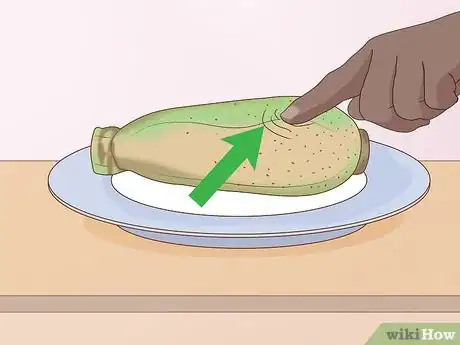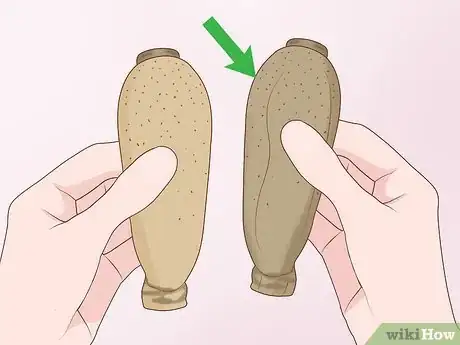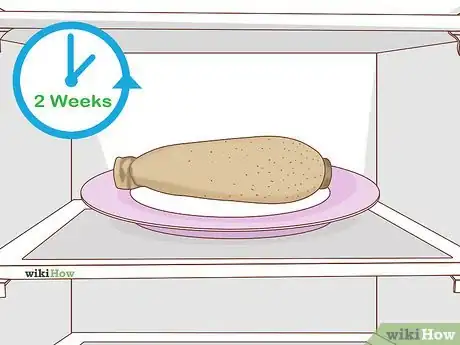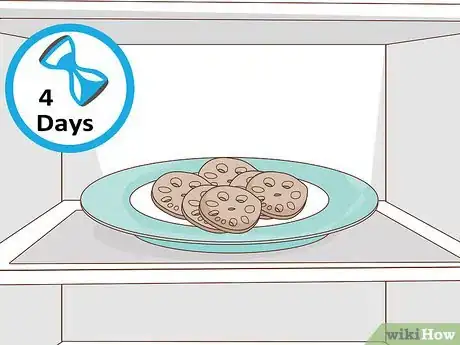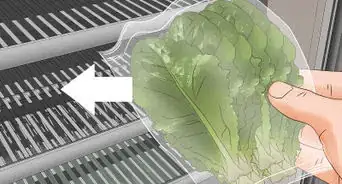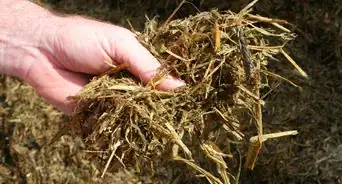This article was co-authored by Lauren Kurtz. Lauren Kurtz is a Naturalist and Horticultural Specialist. Lauren has worked for Aurora, Colorado managing the Water-Wise Garden at Aurora Municipal Center for the Water Conservation Department. She earned a BA in Environmental and Sustainability Studies from Western Michigan University in 2014.
This article has been viewed 41,152 times.
Lotus root is a root commonly used in east Asian food. While it is a versatile ingredient that adds flavor to many dishes, it also spoils somewhat quickly. For people who haven’t used it much, it may be difficult to tell if lotus root has spoiled. However, there are a few simple ways to tell if a particular root has gone bad. Once you know whether a root can be used or not, you'll be able to better enjoy its wonderful flavor in your cooking.
Steps
Observing the Outside of the Root
-
1Look for mold or mildew. Examine the root for signs of mold or mildew. Any dark green, black, gray or white growth on the outside of the root is an indication that it has spoiled. If your root has mold or mildew on it, you should discard it.[1]
-
2Observe to see if the root is soft. Pick up the root and touch it. The root should have a heavy and somewhat hard feel to it. If the root is soft or has any soft spots, the likelihood is that it has spoiled. In this case, you should throw it away.[2]
- Lotus root will stay crisp and somewhat hard even when cooked.
Advertisement -
3Examine the root to see if it is dark brown or black in appearance. Turn the root around in your hand to get a good look at its color. Fresh lotus root tends to be light brown. If your lotus root is darker, it has probably gone bad.
- The best way to be sure is to compare a fresh root that you just bought at the grocery store to an older root that you suspect has gone bad.[3]
-
4Watch for blemishes, like discolored spots or soft spots. While a lotus root might remain firm and appear the right color, large blemishes are signs of a potentially spoiled root. Ultimately, these blemishes are likely just the surface of a larger rotten spot inside the root. If you notice substantial blemishes, you should discard your root.[4]
-
5Look to see if the root appears shriveled. Turn the root around in your hand and take a good look at it. If the root appears to be shriveled or has give in its skin, it may be rotten. In addition, if the root has a dried-out appearance, it is probably spoiled. Fresh roots should seem juicy and plump on the outside.[5]
Examining the Inside of the Root
-
1Cut the root and see if the flesh is yellowish or dark pink. Use a knife to slice the root. The inside of a freshly cut lotus root should have a light pink color. If you cut a root and it appears yellow, dark pink, or even brown, it has gone bad. You should discard the root at once.[6]
-
2Touch the flesh of the root to see if it is soft or mushy. Much like the outside of the root, a fresh root should be solid and crunchy on the inside. Fresh roots have the texture of a cucumber on the inside. If the root isn’t crisp on the inside, discard it.[7]
-
3Slice the root and see if you smell a sour odor. Freshly sliced lotus root should have a mildly sweet smell. If after cutting the root, you notice a sour or fermented smell, the root has gone bad. You should discard it.[8]
Storing Lotus Root
-
1Determine if you’ve had a root for longer than two weeks. If kept in cool and dry conditions, a lotus root can last for up to two weeks after being harvested. However, if lotus root has been stored for longer than two weeks, it may spoil. As a result, be wary of lotus root that you’ve stored for more than two weeks.[9]
- In some cases, lotus root may last longer than two weeks. If you think the root is still good, examine the outside and cut into it to check.
-
2Note whether you cut the root more than 4 days ago. While uncut roots can stay good for up to two weeks if stored properly, cut roots will only last 3 or 4 days in the refrigerator. If you cut your root more than 4 days ago, you should throw it away.[10]
- In almost all cases, cut root will spoil after a few days. As a result, it is best to buy the smallest amount of root possible. This way, you’ll reduce the amount of root you must store.
- If you have kept a cut root outside the refrigerator for more than a few hours, it has probably gone bad.
-
3Avoid roots that have been stored in warm and damp conditions. If kept for more than a day or two in a warm, moist environment, lotus roots will quickly spoil. This is because the roots are susceptible to mold and mildew. As a result, be sure to store your root in a cool and dry space. If your root hasn’t been stored this way, it’ll spoil and you’ll have to discard it.[11]
References
- ↑ https://www.leaf.tv/articles/how-to-tell-when-lotus-root-has-gone-bad/
- ↑ http://www.cooksinfo.com/lotus-root
- ↑ https://www.leaf.tv/articles/how-to-tell-when-lotus-root-has-gone-bad/
- ↑ https://food52.com/blog/9277-lotus-root-and-4-ways-to-use-it
- ↑ https://www.leaf.tv/articles/how-to-tell-when-lotus-root-has-gone-bad/
- ↑ https://www.leaf.tv/articles/how-to-tell-when-lotus-root-has-gone-bad/
- ↑ https://www.leaf.tv/articles/how-to-tell-when-lotus-root-has-gone-bad/
- ↑ https://www.leaf.tv/articles/how-to-tell-when-lotus-root-has-gone-bad/
- ↑ http://www.nutrition-and-you.com/lotus-root.html

